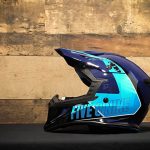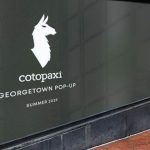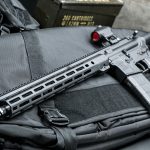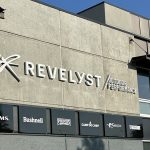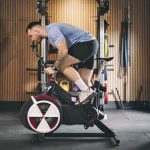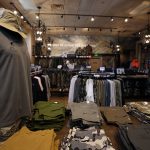Amer Sports is continuing along its three-year path towards integrating Salomon, and in the process transforming itself from a 1 billion sporting goods company into a 2 billion sporting goods company that is heavily invested in the winter sports market. This integration and transformation was bound to hit some stumbling blocks along the way and during Q3, Salomon hit the first when a series of late deliveries that rolled over from the third to the fourth quarter impacted the brands top line by over 17%. This miscue caused Amer Sports to report slower overall sales and earnings for the third quarter, compared to the same period last year.
Geographically, Amer Sports was strongest in the Americas, with nearly 50% of net sales coming from this region compared to 45% last year. Sales in Europe, the Middle East, and Africa (EMEA) declined slightly and accounted for 39% of sales compared to 44% last year. Asia was the smallest geographic area, but showed the strongest growth rate, with sales increasing 7% in Euros. As a percentage of the total, Asia remained flat at 11% of net sales.
The Salomon delivery issues were reportedly caused by a third party distribution service that has always handled Salomons binding and ski business. This year, management decided to give this distributor responsibility for ski boots as well. With roughly 1.3 million pairs of boots slated for delivery this season, the distributor was not able to keep up. During a conference call with analysts and the media, Amer Sports president and CEO, Roger Talermo, said that he has seen no cancellations from this delay at all, and Salomon continues to expect growth for the year. The delivery delay should be no more than three weeks, and if Amers plan of correction remains on-schedule, retailers should all have pre-season deliveries by the end of November.
Salomon is also seeing increased pre-season orders for spring and summer apparel and footwear, and is expecting the coming season to be stronger than last. Winter Sports sales within the division decreased 16.8% to 92.6 million ($118.1 mm), while Apparel and Footwear increased 13.0% to 62.5 million ($79.7 mm). Mavic sales were up 7.5% to 24.5 million ($31.2 mm). Year-to-date, the fastest growth was seen in sales of Arc'teryx winter apparel.
Salomons EBIT came in at a loss of 16.7 million ($21.2 mm), though improving from last years loss of 19.8 million ($24.1 mm). Improved cost controls contributed to the improvement in earnings.
Other than the late deliveries, the Salomon business integration is on schedule. According to Mr. Talermo, Amer Sports main ski manufacturing hub will be in Altenmarkt, Austria. The company is currently removing some bottlenecks from the existing Atomic assembly line to increase its output capacity to roughly 1 million pairs per year. In addition to the Austrian facility, the company will also operate two other secondary factories in Bulgaria and Romania, and a highly specialized, low volume, race ski factory in France. Together these factories will produce an additional 600,000 pairs of skis annually.
The company is also undertaking two major logistics re-configurations. In the U.S., Amer is converting their existing distribution center in Nashville, Tenn. into a facility that will handle exclusively big-box orders and product. In addition, Amer is constructing a new facility to handle all of its specialty retailer orders, also in Nashville, Tenn. The second logistics move will be a similar shift in European logistics and distribution.
Talermo also provided some details on the major challenges the integration is facing.
The primary hurdle, according to Talermo, is the cultural differences between Amer and Salomon. “We are extremely profit-oriented. We measure success on how profitable our businesses are and how well we can generate long-term, sustainable profitability in our business,” he said. “Salomon is more geared to product innovation and maybe to a lesser extent geared towards profitability In this case they have to adapt to our standards, because we are not giving up the profitability side.”
Atomic sales and earnings for the quarter declined slightly due to the discontinued Asics business in Austria, which impacted sales by 9 million ($11.5 mm) during the quarter. On a pro-forma basis, excluding the Asics business, Atomics sales would have increased 4% with profitability up as well. Current pre-season bookings at Atomic are on-par with last year.
Atomic EBIT was also down slightly for the division, off 1.3% to 23.4 million ($29.8 mm) from 23.7 million ($28.9 mm) during the third quarter of 2005.
Suunto reported stronger sales during the third quarter, thanks in part to its new training line of wrist-top computers, which is showing “solid initial sell-through.” The divisions profitability growth out-paced sales growth for the quarter due to stronger than expected sell-in of its higher margin wrist top computers. At the same time, the brand is launching heart-rate monitors at lower price points than it has in the past, starting in the $100 range.
The Suunto division saw an 11.1% increase in EBIT to 1.0 million ($1.3 mm) for the quarter.
Wilsons strength in Racquet Sports is being offset by the on-going struggles in the Golf business and a slight weakness in Team Sports. Talermo said that over-capacity, over-supply, and lower participation numbers, coupled with the USGA restricting innovations is causing the existing turmoil in golf to “change shape” and become more serious.
In response, it seems that Amer has decided to de-emphasize the golf business. “We expect to be the leaders in every category. But in golf, I dont feel it and I think my colleagues share my opinion on this. If we put a lot of money behind it, it wouldnt be worthwhile from an investment perspective,” Talermo said. “There are plenty of examples of other golf companies who have put 500 to 700 million to achieve a certain position. We think, possibly, that 500 million, its better to put somewhere else.”
Talermo said that he will not sell Wilson Golf, because he does not want to split up the Wilson brand among different owners, but he said that there are always other options.
Wilsons Team Sports business slipped during the quarter, but management expects it to grow due to strong demand at retail. The brand has seen some weakness in uniforms and training equipment, which was partially offset by strength in other categories. Amer management expects strength in the team sports business to ramp up through the end of 2007.
Wilsons Racquet Sports business continues to be driven by the nCode product, which is now in the third year of its extended product cycle. The company anticipates a major new launch of product to replace nCode in 2007. The company expects stability in the Racquet Sports business through the end of 2006, but management does not have reliable visibility after that.
EBIT for the Wilson division increased 14.5% to 7.9 million ($10.1 mm) from 6.9 million ($8.4 mm) last year.
Precor continues to be Amers fastest growing segment with much of the growth driven by the commercial health club segment, but positive sales results in the divisions other segments as well. The companys Cardio Theater product is showing strong sales and in-turn driving sales of cardio machines.
EBIT was down 15.5% to 6.0 million ($7.7 mm) from 7.1 million ($8.7 mm) during last years third quarter.
The companys balance sheet is not showing much improvement since the Salomon acquisition. Debt remains at the same level as last year due to the high level of integration activity. Inventories and receivables are up, while cash is down considerably. 41.9 million (53.2 mm) was invested in research and development, representing 3.5% of net sales.
Management lowered its 2006 full-year EPS guidance down from a range of 0.95 to 1.05 per share to a range of 0.90 to 1.05 per share. Management still expects sales to be roughly 1.8 billion.
| Amer Sports | |||
| Third Quarter Pro Forma Results | |||
| (in $ millionsa) | 2006a | 2005a | Changeb |
| Group Sales | $601.7 | $590.1 | -2.4% |
| Americas | $270.2 | $264.2 | -2.1% |
| EMEA | $270.3 | $271.9 | -4.8% |
| Asia Pacific | $61.2 | $54.1 | +8.4% |
| Wilson | $153.4 | $153.9 | -4.6% |
| Salomon | $229.0 | $231.2 | -5.2% |
| Precor | $77.0 | $70.7 | +4.3% |
| Atomic | $119.0 | $114.5 | -0.5% |
| Suunto | $23.3 | $20.0 | +11.6% |
| Net Income | $46.7 | $45.6 | -2.1% |
| Diluted EPS | 64¢ | 63¢ | -3.8% |
| Inventoryc | $497.4 | $201.2 | +135% |
| Acc Receivablec | $678.8 | $337.6 | +90.9% |


